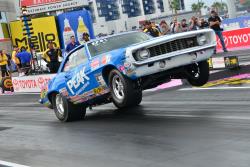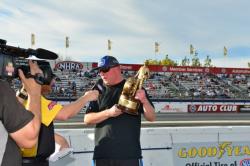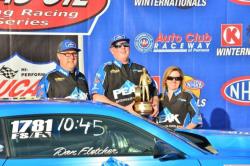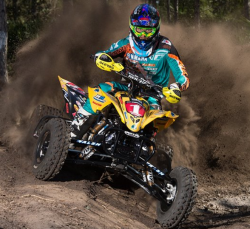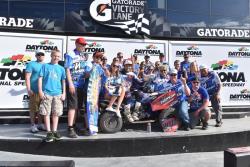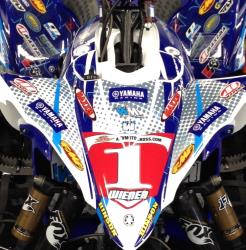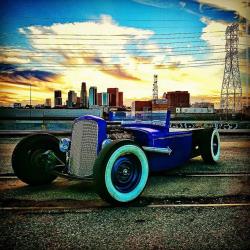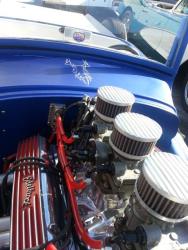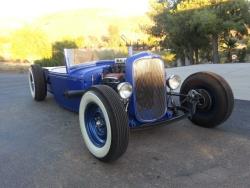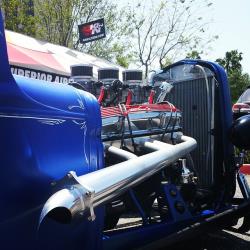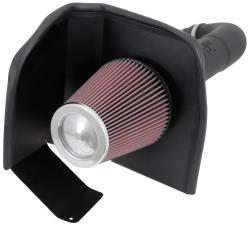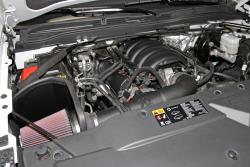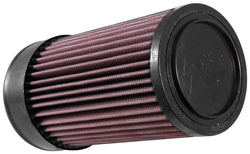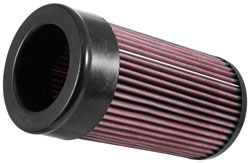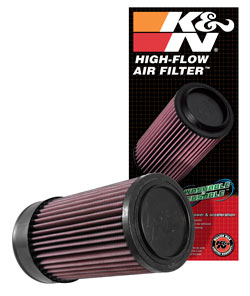K&N-Sponsored Dan Fletcher Closes in on 100 NHRA Drag Racing Wins
- 9 ene 2017
John Force leads the list with 145 career wins over his 38-year career. Frank Marzo is second with 105 and retired from racing after the 2013 season. Dan Fletcher entered the 2016 NHRA drag racing season with 94 wins. He won five events in NHRA Sportsman classes and there is little doubt he will join the 100-win club at some point in 2017. “I haven’t thought a great deal about what it means,” Fletcher said. “I’m just so busy putting my head down, just clocking in every day, going to work and doing my job. A hundred wins, it’s a huge plateau, just the number itself. “But the fact that Force and Manzo are the only two ever, to be mentioned in a club with Force and Manzo, I’m just a guy who worked at Xerox and quit his job to go racing full time. Here I am 20 years later to be at a 100-win mark.” Fletcher started the season by winning in Stock Eliminator at Auto Club Raceway in Pomona, California. He won events in Super Comp and Super Stock during the season. Racing at Pomona has produced successful results over the years for Fletcher. “It’s treated me pretty well. I’ve done pretty good there,” Fletcher said. “This is what I do for a living. It’s my job. I need to win races to provide food for the family. I’m going there to win the race because that’s what I do for a living.” He won his second event in Las Vegas in Super Comp. In a car he borrowed from Luke Bogacki, Fletcher won for the first time in his career in Super Comp.
Fletcher said that winning races has become more difficult over the years. The drivers and the equipment they use are fairly equal. Luck plays as big a role as preparation sometimes. “Everyone’s equipment these days is really, really sound,” Fletcher said. “Everyone drives well. It’s gotten incredibly, incredibly hard to win. No matter what, it’s just so hard to win. They used to come a lot easier.” Fletcher won his third event in Atlanta in Super Stock. That made three event wins in three different classes. He drove the car his dad built in Atlanta. Fletcher said it is his favorite car to race, for sentimental and technical reasons. “I really wouldn’t say one is easier than the other. The class that I compete in that has the least driver aids is Stock Eliminator,” Fletcher said. “They’re the hardest to be good at because you have less tools in your toolbox. Yet that class seems to be the hardest one. Guys’ reaction times in Stock Eliminator are as good as the guys’ reaction times in Super Comp it seems. It’s incredibly difficult to win in that class." But Super Comp is where Fletcher’s passion for racing comes out. “That car is obviously extremely special to me,” Fletcher said. “That one’s the most important thing to me.” Fletcher won two more events in Super Comp. He won in Chicago, then had a bit of a drought through the summer. He was stuck on 98 wins for about two months.
“I have trouble even saying it,” Fletcher said. “To be at the point and at that level, in rarified air that is occupied by Force and Manzo. To be only the third person to accomplish something, that’s pretty awesome.” The 2017 season starts in February in Pomona. Fletcher said he will be there and hopefully win his 100th event. “It’s kind of fun having it waiting there,” Fletcher said. “It’s kind of like a Christmas present. I’d like to think within the first, second, third event of the year, I will knock it off. I just hope that, A, I would like to do it in my father’s car, the Super Stock car. And B, I would truly hope that my wife will be at the event when I do it.” | ||||
| | ||||
| ||||
| | ||||

